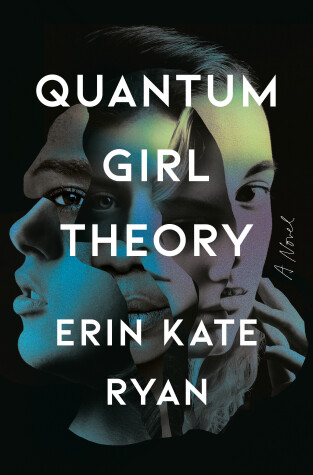I wasn’t too sure about this book when I accepted the review request. I had read mixed reviews for Quantum Girl Theory, and from what I read, either people loved this book or hated it. I had read very few reviews that were middle ground. What ultimately made me accept this book was based on a disappearance in the 1940s that never got solved. I was curious to see how the author weaved her story around Paula Jean Welden’s disappearance.
Quantum Girl Theory is a story about a girl who disappeared and speculations about what happened to her. Mary is a clairvoyant who makes money from finding missing girls—dead or alive but more often dead. She arrives in Elizabethtown, North Carolina, and immediately contacts the parents of Paula, who has recently gone missing. The investigation into Paula’s disappearance will uncover secrets. These secrets people will kill to keep hidden. But there is more to Mary than what people see. Mary has her own reasons for finding these missing girls. Will Mary find Paula? Or will she be silenced before she can tell the truth?
As I mentioned in the first paragraph, this story is loosely based on the real-life disappearance of Paula Jean Welden (I included a link to the New England Historical Society). I am fascinated with anything true crime and was secretly thrilled that Quantum Girl Theory was taking a 60-year-old disappearance and shining some light on it. The author’s research was excellent, and I loved how she took any/all rumors and incorporated them into the book. But, it did fall a little flat for me.
The main storyline (with Mary, in 1961) was interesting to read. I didn’t particularly like Mary. She was so depressing, and it did bring down the book in some parts. I wish I could say that my opinion of her improved as the book went on. It didn’t. She remained the same throughout the book. Not all characters have to be likable, and Mary was not. I did like that the author did that.
I was surprised at how the 1961 storyline went. I wasn’t expecting the other two girls to be added to Mary’s investigation. There was a point in the book where I wondered why the author introduced them, but there is a link to Paula’s disappearance. I was surprised at how and why they were linked. I was also surprised by the common denominator behind all three disappearances.
The memories were fascinating. I did have some issues following along. There were times when I wasn’t sure if it was Mary remembering another Paula’s life or it was Mary’s life. I did have to reread several of those memories to make sure what I was reading (if that makes sense). It did lessen my enjoyment of the book for me.
The end of Quantum Girl Theory did confuse me a little. I couldn’t figure out what was happening, which seldom happened. I did figure it was obvious but then second-guessed myself. I also was irritated because I felt that nothing got wrapped up. That, along with cliff-hangers, are my most significant irritant with these types of books.
I would recommend Quantum Girl Theory to anyone over 21. There is moderate violence, language, and sex/sexual situations. There is also racism and discrimination.
